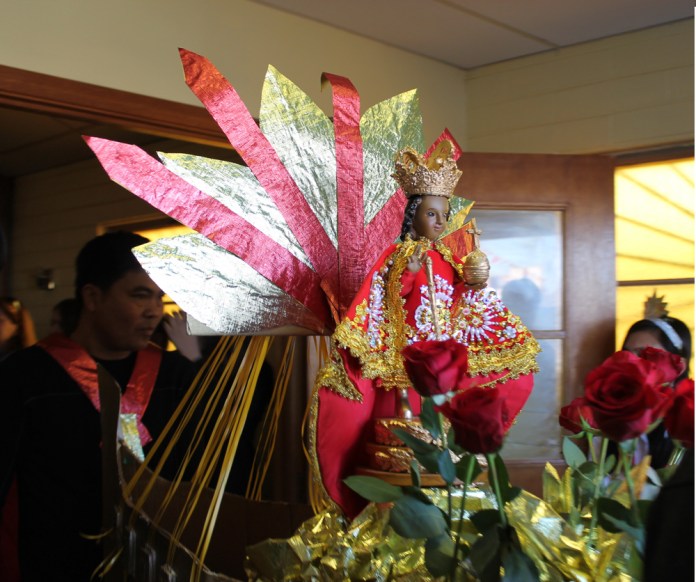More than 250 parishioners filled St. Jude Parish in Tuba City, AZ for the annual celebration of Santo Niño de Cebú on January 19th. The “Holy Child of Cebu” is a small statue dated to the 16th century, when explorer Ferdinand Magellan bequeathed it to the ruler of the village of Cebu and his wife after their conversion to the Catholic Faith in 1521.
The statue, now one of the most widely-venerated religious objects in the Philippines, is thought to be miraculous, as it was found completely unscathed in the ruins of a burned house in 1565. A church was erected on the site of the find, and throughout the centuries the natives of the Philippines have celebrated the “Holy Child” on the third Sunday in January.
St. Jude has seen an increase of Filipino parishioners over the past few years, as many families have immigrated into Tuba City to teach at the local public schools and work in the city’s hospital. Honoring the tradition of their homeland, the parish held a celebration of Santo Niño complete with a procession, dancing, and a roast pig feast featuring Filipino and Navajo foods.
Fr. Jay Jung, CM is the pastor at St. Jude. He says that although Tuba City is on the Navajo Reservation, he is happy to encourage the culture of all parishioners, whether Filipino, Navajo, or Hispanic.
“I see diversity as a blessing, the richness of cultures and learning about each others’ gifts, but I don’t want one to dominate to the exclusion of others,” he said. “We’re all one Church, one Faith, but sometimes different according to culture. At the Santo Niño celebration, everyone is welcome to the celebration – everyone is invited.”
Fr. Jung draws the connection between the two cultures. Filipinos were first colonized by the Spanish in the 16th century, just as Spain was also spreading its influence in the Southwest around the same time.
“Both were colonized by the Spanish, and both sometimes had a raw deal,” Fr. Jung said. “But now, the Filipino people are passionate Roman Catholics, and they fully embrace Catholicism. The Church plays a prime role in their lives – you can’t separate one from the other.”
While Native Americans make up a much smaller percentage of Catholics compared to Filipinos, Fr. Jung says that both cultures still share much common ground, both with each other and with Catholicism.
“So many of the Native American beliefs are very consistent with Catholicism, such as the idea of God as Creator.”
In Tuba City, the sharing and welcoming of two separate cultures is very much in evidence. Whether drawn together by the aroma of roast pig or their common cultural backgrounds, it seems the celebration of Santo Niño de Cebú is alive and well, nearly five hundred years and several thousand miles from where it was first venerated.








